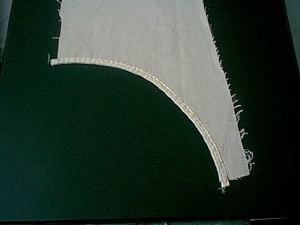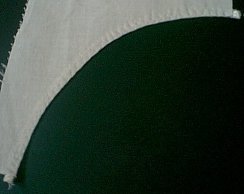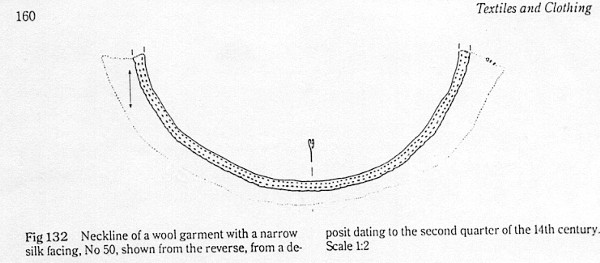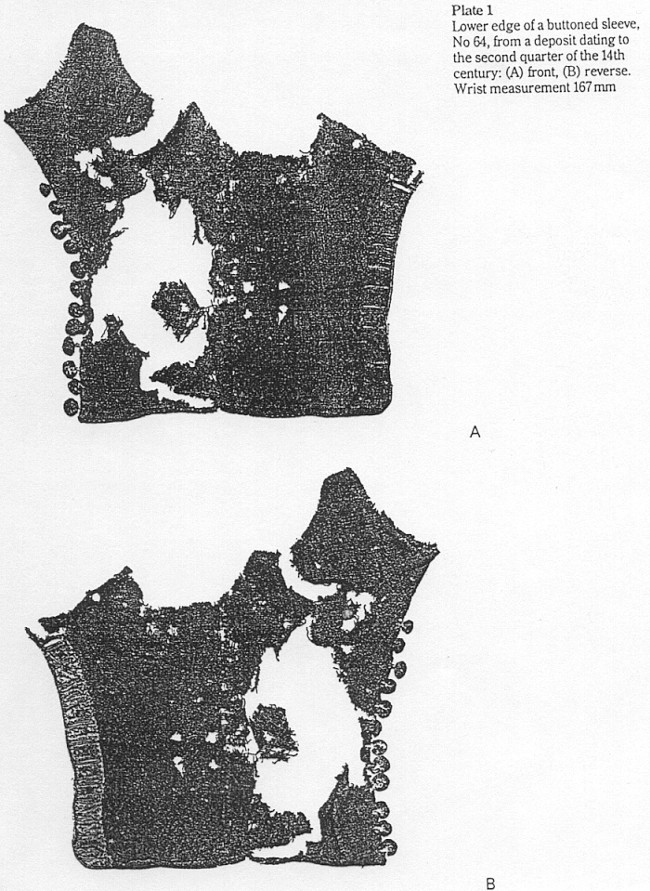Section # 2 Facings (Primarily from Crowfoot et al)
 Facings
are used in period and modern garments to finish and strengthen edges
of garments (primarily necklines and sleeves).
Facings
are used in period and modern garments to finish and strengthen edges
of garments (primarily necklines and sleeves).
Modern facings use the following techniques: They are cut from a piece
of self fabric, along the same grain lines as the garment about 50 mm to 100 mm (2 to 4 inches) wide. They are sewn around the area to
be finished (usually the neck) then turned to the inside of the garment,
under stitched through the seam allowance, and then tacked to the internal
seam allowances or to the lining
50 mm to 100 mm (2 to 4 inches) wide. They are sewn around the area to
be finished (usually the neck) then turned to the inside of the garment,
under stitched through the seam allowance, and then tacked to the internal
seam allowances or to the lining
Period facings use the following techniques: They are cut from tabby
woven silk fabric (or possibly silk ribbon) that is 5 mm to 25 mm wide.
They are sewn to the folded edge created by turning the seam allowance
of the edge to be faced over by 3-5 mm. The facing may have between 1
and 3 rows of stitching holding it in place. Lastly, it is hemstitched
all around to prevent fraying and to keep the edge in place.

Note on fabrics for facings: The digs in London have only uncovered straight-
grain tabby woven facings. I have used strips cut from the same cloth
as the garment to finish the edges if the fabric is not very thick (linen,
raw silk, and fine wool). Strips cut along the selvedge work particularly
well, since you don't need to worry about the edges fraying. I don't know
how well twill or satin woven ribbon would work, but will look in to it.
NO BIAS TAPES have been found.

Next >